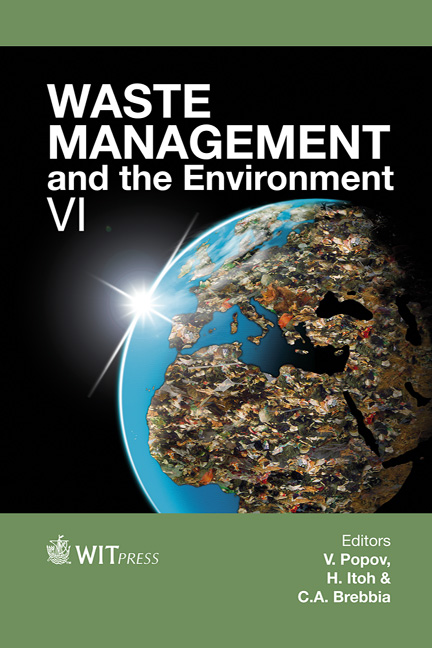Comparison Of The Combustion Behaviours Of Agricultural Wastes Under Dry Air And Oxygen
Price
Free (open access)
Transaction
Volume
163
Pages
7
Page Range
145 - 151
Published
2012
Size
1,160 kb
Paper DOI
10.2495/WM120141
Copyright
WIT Press
Author(s)
H. Haykiri-Acma & S. Yaman
Abstract
Biomass is a renewable fuel and the fourth largest energy source following coal, oil, and natural gas. Besides, agricultural wastes account for an important part of biomass, and they have not been evaluated properly. Although some conversion methods have been also applied to biomass to produce pyrolytic liquids, gaseous fuels or activated carbon, combustion is still the most applicable method to take advantage of the energy potential of biomass. In this study, some agricultural waste biomass materials such as sunflower seed shell (SSS), hazelnut shell (HS), rice hull (RH), and olive husk (OH), all of which have great potential in Turkey were regarded as renewable energy sources. In order to compare the combustion reactivities of these materials, burning tests were carried out under different atmospheres such as dry air and oxygen. For this purpose, biomass materials were burned in a thermal analyser to obtain TGA (Thermogravimetric Analysis) and DSC (Differential Scanning Calorimetry) thermograms under both conditions. Initial sample mass was approximately 10 mg for each sample which has a particle size of <0.25 mm, and temperature was raised from ambient to 900°C with a heating rate of 40°C/min under gas flow rate of 100 mL/min. No hold time was allowed at the final temperature. This study showed that the thermal reactivities of biomass species change in a wide region, and the type of the oxidative medium plays very important effects on the burning parameters such as the ignition point, maximum rate of combustion and its temperature as well as the end point of burning. On the other hand, macromolecular ingredients of biomass such as hemicellulosics, celluloses, and lignin have significant effects on the combustion behaviour of these waste materials. Keywords: biomass, agricultural wastes, combustion, dry air, oxygen.Keywords
biomass, agricultural wastes, combustion, dry air, oxygen.





